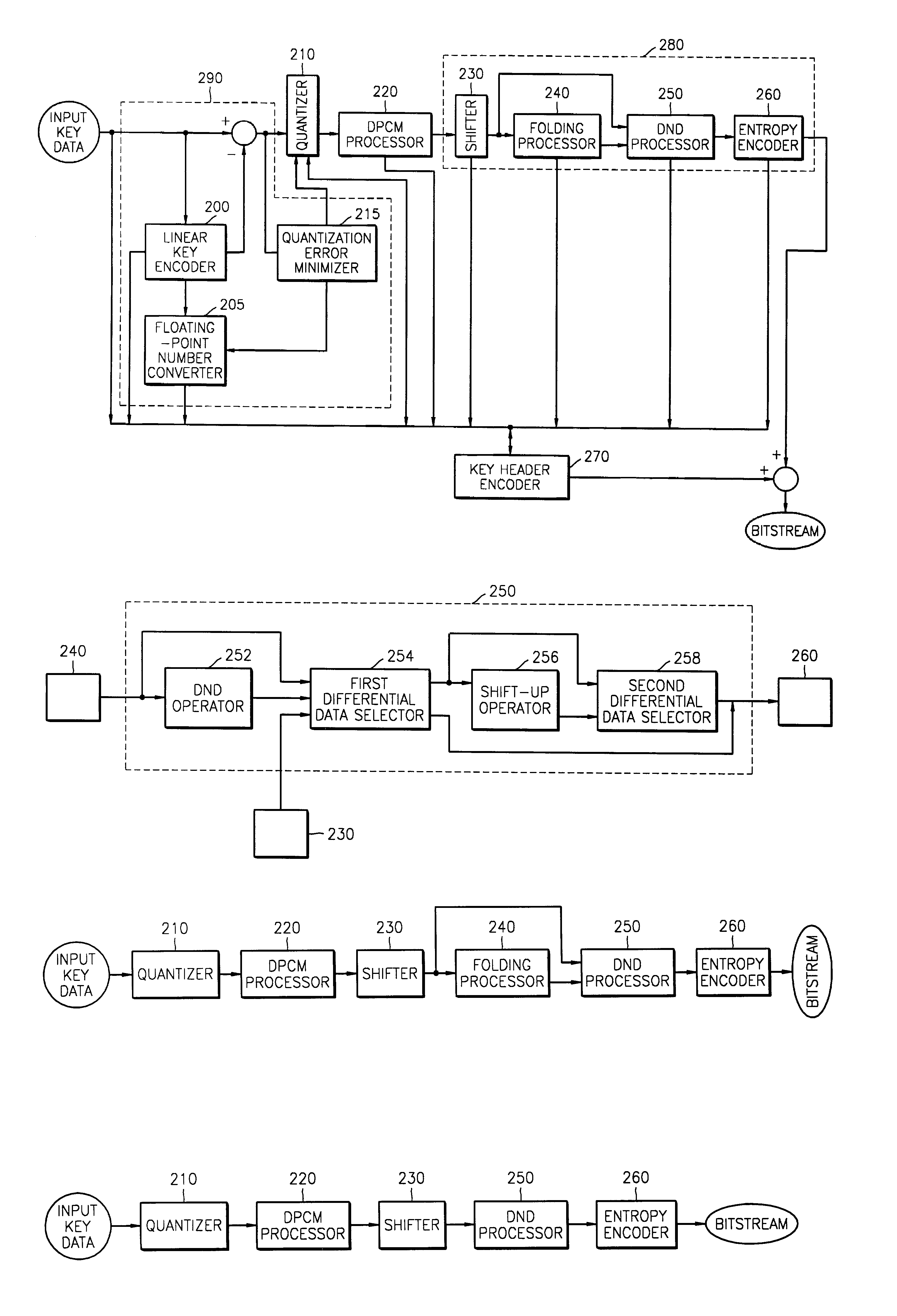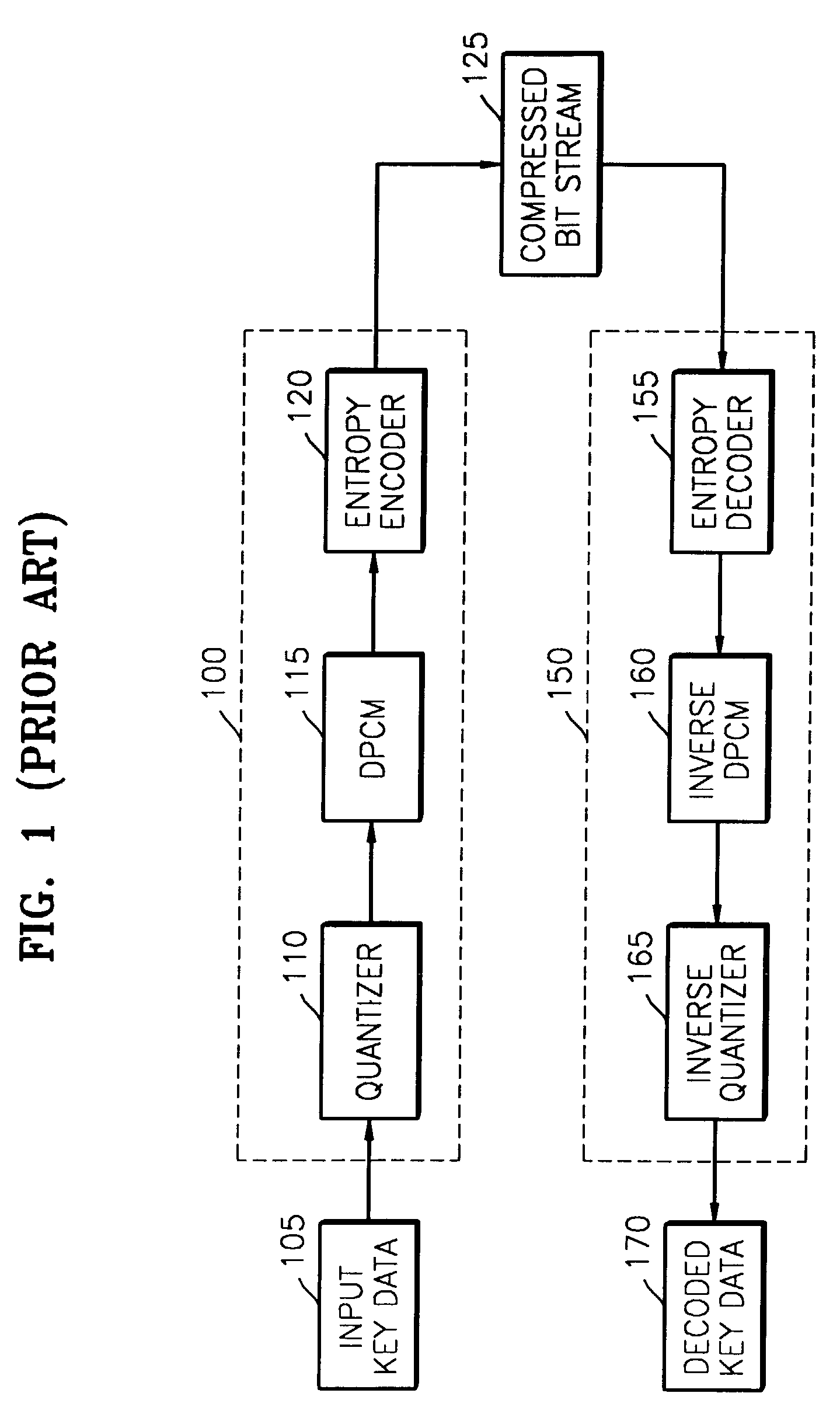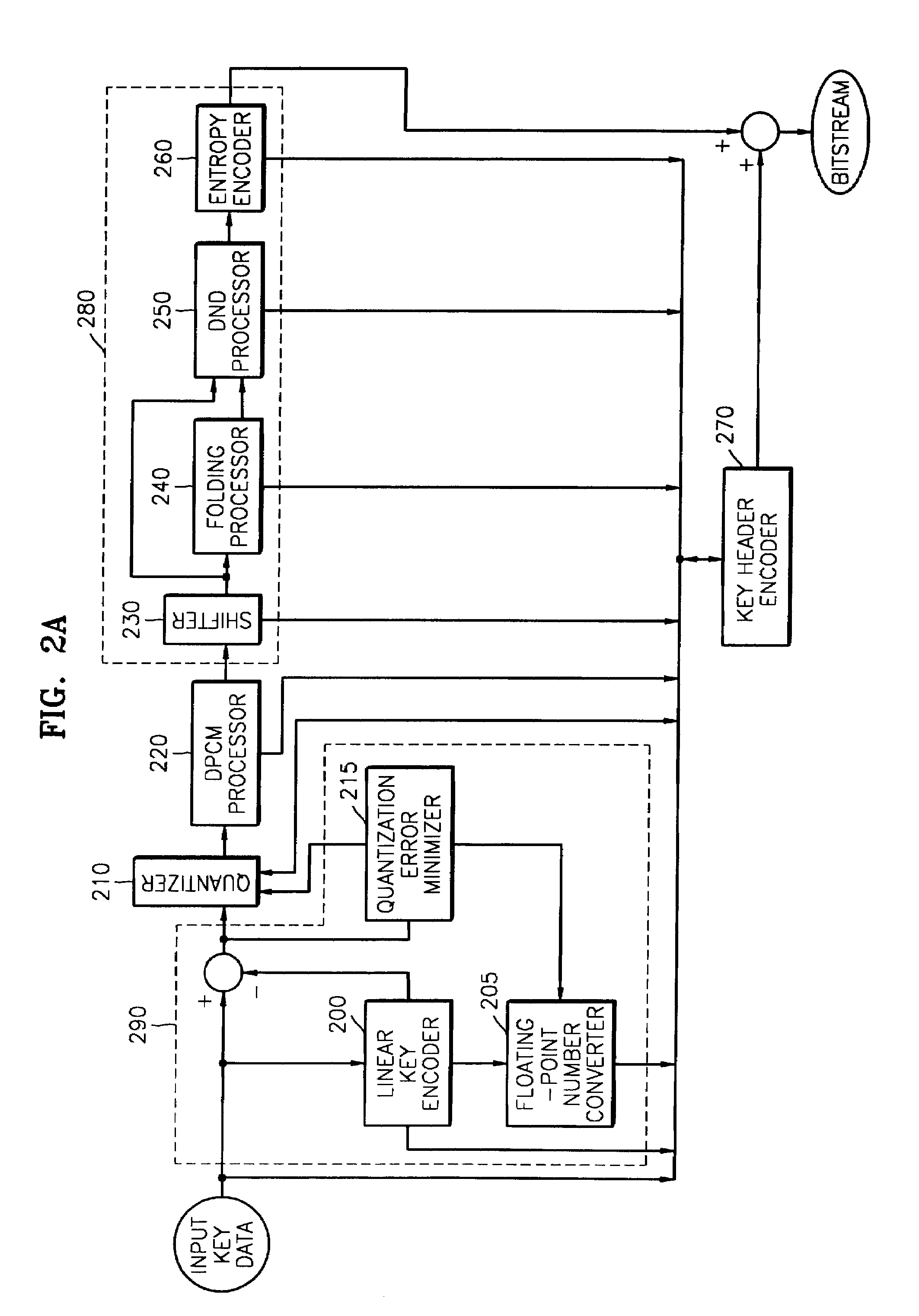Method and apparatus for encoding and decoding key data
a key data and key data technology, applied in the field of key data encoding and decoding methods, can solve the problems of ineffectiveness, reduced reliability of data, and serious computational costs and efficiency, and achieve the effects of reducing the range of key data, and increasing the compression rate an entropy encoder
- Summary
- Abstract
- Description
- Claims
- Application Information
AI Technical Summary
Benefits of technology
Problems solved by technology
Method used
Image
Examples
Embodiment Construction
[0054]FIG. 2A is a block diagram of an encoder according to a preferred embodiment of the present invention.
[0055]A method for encoding key data according to a preferred embodiment of the present invention will now be described with reference to FIGS. 3A and 3B. FIGS. 3A and 3B are flowcharts of the method for encoding key data. Referring to FIGS. 3A and 3B, if key data are input into an encoder, information on, for example, the number of key data and the number of digits of each of the key data, is input into a key header encoder 270 and is encoded. A linear key encoder 200 searches for a region in the input key data where key frames exist at certain temporal intervals, key data have the same difference, and the key data changes linearly, and the searched linear region is encoded first in step S3000.
[0056]Famous 3D application software, such as 3Dmax Maya, generates key-frame based animation using keys having a predetermined time gap therebetween in specific regions. In this case, ...
PUM
 Login to View More
Login to View More Abstract
Description
Claims
Application Information
 Login to View More
Login to View More - R&D
- Intellectual Property
- Life Sciences
- Materials
- Tech Scout
- Unparalleled Data Quality
- Higher Quality Content
- 60% Fewer Hallucinations
Browse by: Latest US Patents, China's latest patents, Technical Efficacy Thesaurus, Application Domain, Technology Topic, Popular Technical Reports.
© 2025 PatSnap. All rights reserved.Legal|Privacy policy|Modern Slavery Act Transparency Statement|Sitemap|About US| Contact US: help@patsnap.com



